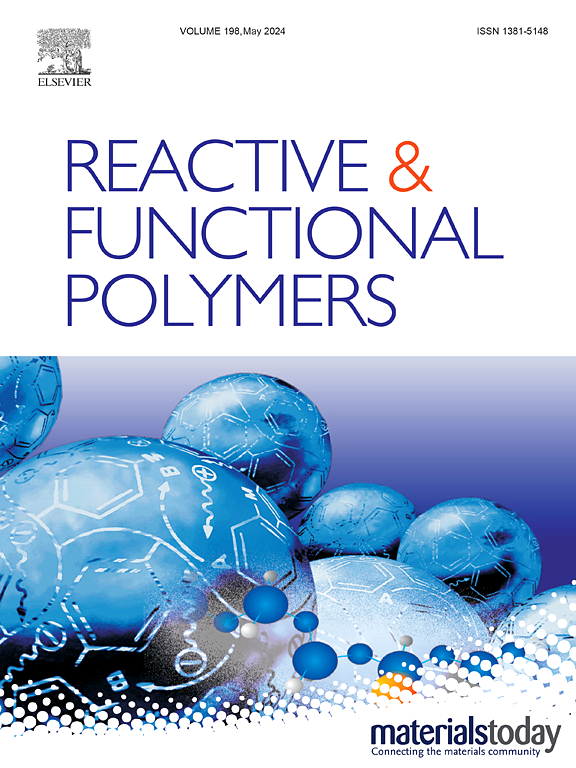Dual-charged cryogels for efficient removal of dyes and oil-water separation in wastewater treatment
IF 4.5
3区 工程技术
Q1 CHEMISTRY, APPLIED
引用次数: 0
Abstract
With the development of modern industry, water pollution has become an urgent environmental issue, so it is very urgent to find one-step strategy to treat with complicated wastewater. In this paper, poly (vinyl imidazole -co- methacrylic acid) cryogels were prepared with freezing polymerization for the treatment of complicated wastewater containing not only cationic dyes and anionic dyes but also common organic solvents. For the preparation of cyrogels, with the increase of the molar ratio of methacrylic acid to vinyl imidazole, the adsorption capacity of dyes varied as 271.33–187.09 mg·g−1 for methyl blue, 342.96–150.16 mg·g−1 for methyl orange, 7.76–85.72 mg·g−1 for methylene blue, and 19.19–110.10 mg·g−1 for crystal violet. Thus, by adjusting the molar ratio of monomers, a variety of versatile cryogels could be designed to treat with dye solutions of different type and concentration. Adsorption mechanism was then investigated through kinetics and isotherm, which showed single-layer chemical adsorption. Moreover, the surface hydrophilicity of porous cryogels made it possible for the separation of oil-water mixtures with over 95 % separation efficiency by selective water permeation. This study provides a quite new approach to prepare cryogels with both positive and negative charges.

求助全文
约1分钟内获得全文
求助全文
来源期刊

Reactive & Functional Polymers
工程技术-高分子科学
CiteScore
8.90
自引率
5.90%
发文量
259
审稿时长
27 days
期刊介绍:
Reactive & Functional Polymers provides a forum to disseminate original ideas, concepts and developments in the science and technology of polymers with functional groups, which impart specific chemical reactivity or physical, chemical, structural, biological, and pharmacological functionality. The scope covers organic polymers, acting for instance as reagents, catalysts, templates, ion-exchangers, selective sorbents, chelating or antimicrobial agents, drug carriers, sensors, membranes, and hydrogels. This also includes reactive cross-linkable prepolymers and high-performance thermosetting polymers, natural or degradable polymers, conducting polymers, and porous polymers.
Original research articles must contain thorough molecular and material characterization data on synthesis of the above polymers in combination with their applications. Applications include but are not limited to catalysis, water or effluent treatment, separations and recovery, electronics and information storage, energy conversion, encapsulation, or adhesion.
 求助内容:
求助内容: 应助结果提醒方式:
应助结果提醒方式:


